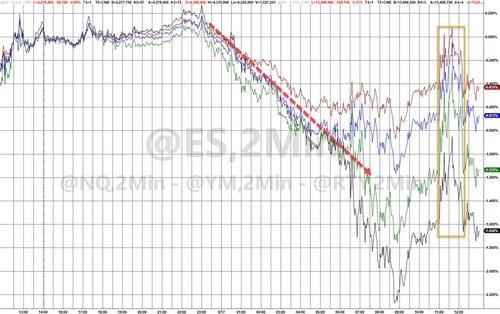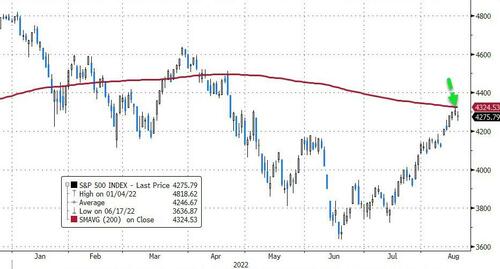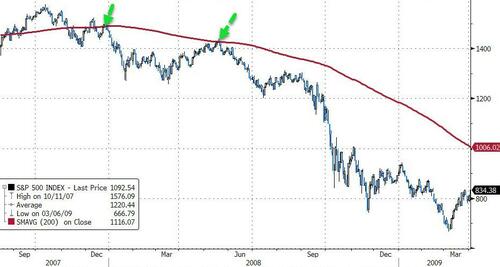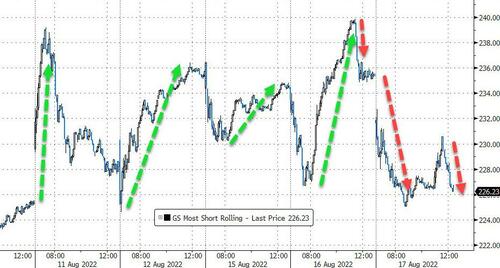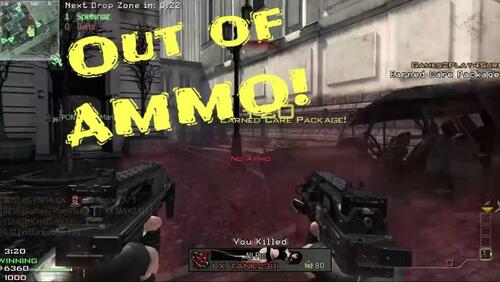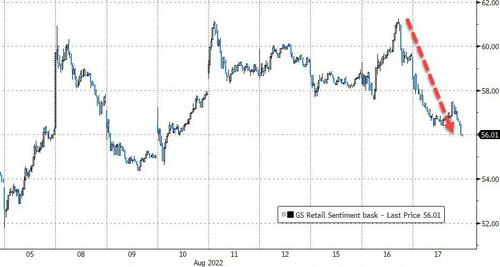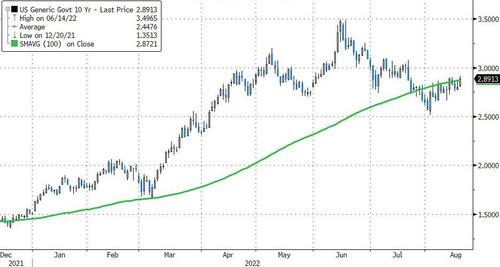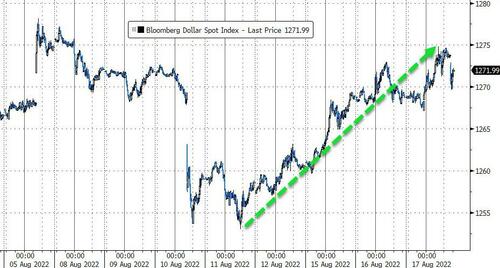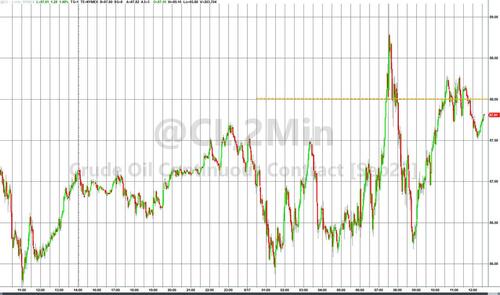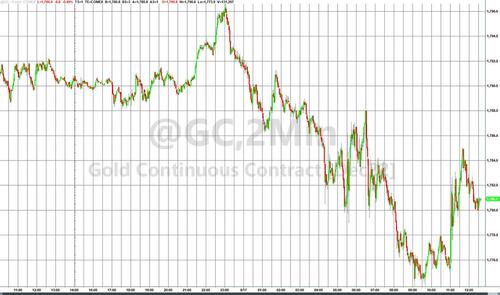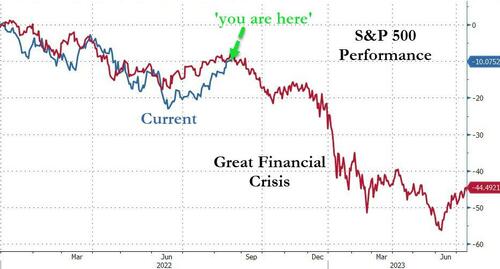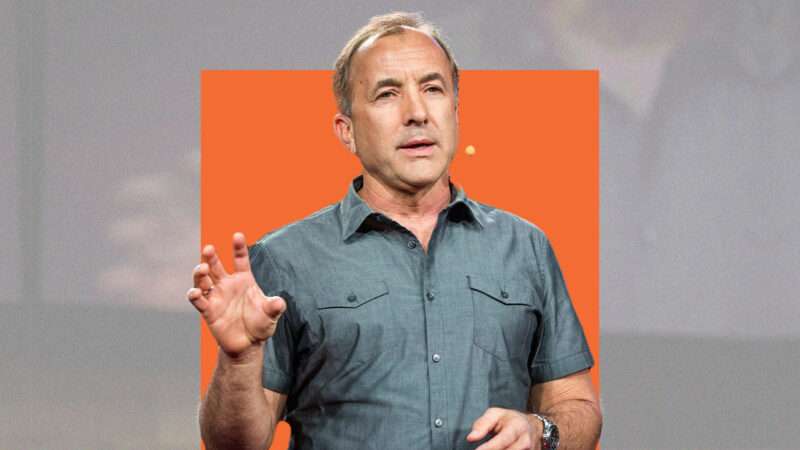It took me a while to wrap my head around all the details in this case, but I finally did that while editing it down for the 2022 Supplement to my First Amendment and Related Statutes casebook. Here’s my summary of the legal background, followed by excerpts from the relevant opinions (which are still long, unfortunately):
[a.] Summary
[1.] The Court takes the view that some government funding flowing to religious uses violates the Establishment Clause (see Part XII.A.1.b); that restraint has narrowed over time, but for a while it was quite broad. Given this, the Court has had to consider whether this principle prohibits private speakers from using government property or programs in ways that lead government funding to flow to those speakers’ religious speech.
Widmar v. Vincent, 454 U.S. 263 (1981), Board of Ed. v. Mergens, 496 U.S. 226 (1990), Lamb’s Chapel v. Center Moriches Union Free School Dist., 508 U.S. 384 (1993), Rosenberger v. Rector (1995) (p. 872), and Good News Club v. Milford Central School, 533 U.S. 98 (2001), all said “no”: They held that religious groups (mostly K–12 or college student groups) were constitutionally entitled to equal access to government property and government funding programs, and shouldn’t be excluded by the Establishment Clause from such funding.
[2.] For a time, the Court took the view that government speech could violate the Establishment Clause by endorsing religion (see Part XI.D). The Court thus likewise had to consider whether private religious speech on government property or using government funding violated this no-endorsement principle.
The cases cited above likewise said “no.” Mergens, for instance, reasoned that, “The proposition that schools do not endorse everything they fail to censor is not complicated,” and students could be expected to understand it. Likewise, in Capitol Square Review & Advisory Bd. v. Pinette, 515 U.S. 753 (1995), the Court held that religious speakers were entitled to equal access to public fora (including when the government chose to let groups place unattended signs or displays on public property), despite the concern that some passersby might perceive religious speech in a public forum as being endorsed by the government.
[3.] Finally, the Court takes the view that some government speech can psychologically coerce people into engaging in religious practice (see Part XI.E). Given this, the Court has had to consider what should be done when government employees who are speaking (or so they say) in their private capacities say or do things that might be psychologically coercive.
For instance, an Orthodox Jewish schoolteacher wearing a yarmulke and a Christian teacher wearing a cross are expressing their own views, and not the school’s. Some states had old statutes barring schoolteachers from wearing such religious garb or insignia, and two lower court cases had upheld those statutes in 1986 and 1990. Cooper v. Eugene School Dist. No. 4J, 301 Or. 358 (1986), appeal dismissed for want of substantial federal question, 480 U.S. 942 (1987) (over the dissenting votes of Brennan, Marshall, & O’Connor, JJ.); United States v. Board of Ed., 911 F.2d 882 (3d Cir. 1990). But Tenafly Eruv Ass’n, Inc. v. Borough of Tenafly, 309 F.3d 144 (3d Cir. 2002), concluded that Lamb’s Chapel and later cases had undermined the rationales of Cooper and Board of Ed.; and it does seem that the Court’s modern Free Speech Clause and Free Exercise Clause jurisprudence—which generally bars discrimination against religious speech and conduct—would invalidate such religious garb/insignia bans.
The question then is how far this nondiscrimination rule goes: Is it unconstitutional for a state to bar teachers, for instance, from reading the Bible during breaks at school? From audibly saying grace before their meals in the cafeteria, on the theory that such conduct may subtly coerce students into joining in, or otherwise going along with the teacher’s religion? Praying after a game? From allowing students to join in the prayer? From inviting students to join in the prayer?
Kennedy v. Bremerton School District, excerpted below, is the Court’s attempt to deal with this issue; it has three related but separate parts:
[i.] It rejects the Lemon v. Kurtzman test as a general guide for evaluating government action under the Establishment Clause, and rejects the endorsement test as a general guide for government religious speech. This was already done by a majority of the Justices in American Legion v. American Humanist Ass’n (2019) (p. 783); that portion of the analysis is omitted below for space reasons.
[ii.] It specifically holds that a coach’s personal prayer, conducted without students participating, can’t be specially targeted for punishment. The majority stressed the absence of students, and also the targeting of religious speech, see Parts C, D, and G.
This narrow holding was made possible by the school district’s saying that the “sole reason” for its suspension of Kennedy was “the risk of constitutional liability associated with Kennedy’s religious conduct,” specifically his October 16, 23, and 26 prayers, which were not joined by any of his students. Kennedy v. Bremerton School Dist., 443 F. Supp. 3d 1223, 1231 (W.D. Wash. 2020). It thus appears that the district wasn’t relying (at least at the time Kennedy was suspended) on (a) any general, religion-neutral “you can’t use the football field for any personal speech or conduct that draws the spectators’ attention” rule; (b) any concern that Kennedy’s prayers caused disruption when opposing team members joined them, or when the prayers led members of the public or media to go on the field; or (c) any concern about Kennedy’s past prayers with students, which Kennedy had stopped by then.
[iii.] It contains broader language about protecting government employee speech that might—or might not—apply even when students participate (whether they were formally invited, just joined on their own out of personal conviction, or joined on their own but out of a desire to please the coach).
[b.] Kennedy v. Bremerton School Dist., 142 S. Ct. 2407 (2022)
Justice Gorsuch delivered the opinion of the Court.
[A.] Joseph Kennedy lost his job as a high school football coach because he knelt at midfield after games to offer a quiet prayer of thanks. Mr. Kennedy prayed during a period when school employees were free to speak with a friend, call for a reservation at a restaurant, check email, or attend to other personal matters. He offered his prayers quietly while his students were otherwise occupied. Still, the Bremerton School District disciplined him anyway.
It did so because it thought anything less could lead a reasonable observer to conclude (mistakenly) that it endorsed Mr. Kennedy’s religious beliefs. That reasoning was misguided. Both the Free Exercise and Free Speech Clauses of the First Amendment protect expressions like Mr. Kennedy’s. Nor does a proper understanding of the Amendment’s Establishment Clause require the government to single out private religious speech for special disfavor. The Constitution and the best of our traditions counsel mutual respect and tolerance, not censorship and suppression, for religious and nonreligious views alike….
[B.] Like many other football players and coaches across the country, Mr. Kennedy made it a practice to give “thanks through prayer on the playing field” at the conclusion of each game. In his prayers, Mr. Kennedy sought to express gratitude for “what the players had accomplished and for the opportunity to be part of their lives through the game of football.” Mr. Kennedy offered his prayers after the players and coaches had shaken hands, by taking a knee at the 50-yard line and praying “quiet[ly]” for “approximately 30 seconds.”
Initially, Mr. Kennedy prayed on his own. But over time, some players asked whether they could pray alongside him. Mr. Kennedy responded by saying, “‘This is a free country. You can do what you want.'” The number of players who joined Mr. Kennedy eventually grew to include most of the team, at least after some games. Sometimes team members invited opposing players to join. Other times Mr. Kennedy still prayed alone. Eventually, Mr. Kennedy began incorporating short motivational speeches with his prayer when others were present.
Separately, the team at times engaged in pregame or postgame prayers in the locker room. It seems this practice was a “school tradition” that predated Mr. Kennedy’s tenure. Mr. Kennedy explained that he “never told any student that it was important they participate in any religious activity.” In particular, he “never pressured or encouraged any student to join” his postgame midfield prayers.
For over seven years, no one complained to the Bremerton School District … about these practices. It seems the District’s superintendent first learned of them only in September 2015, after an employee from another school commented positively on the school’s practices to Bremerton’s principal. At that point, the District reacted quickly.
On September 17, the superintendent sent Mr. Kennedy a letter … instruct[ing] Mr. Kennedy to avoid any motivational “talks with students” that “include[d] religious expression, including prayer,” and to avoid “suggest[ing], encourag[ing] (or discourag[ing]), or supervis[ing]” any prayers of students, which students remained free to “engage in.” The District also explained that any religious activity on Mr. Kennedy’s part must be “nondemonstrative (i.e., not outwardly discernible as religious activity)” if “students are also engaged in religious conduct” in order to “avoid the perception of endorsement.” … [T]he District appealed to what it called a “direct tension between” the “Establishment Clause” and “a school employee’s [right to] free[ly] exercise” his religion. To resolve that “tension,” the District explained, an employee’s free exercise rights “must yield so far as necessary to avoid school endorsement of religious activities.”
After receiving the District’s September 17 letter, Mr. Kennedy ended the … locker-room prayers … [and the] religious references or prayer [in] his postgame motivational talks to his team on the field. Mr. Kennedy further felt pressured to abandon his practice of saying his own quiet, on-field postgame prayer. Driving home after a game, however, Mr. Kennedy felt upset that he had “broken [his] commitment to God” by not offering his own prayer, so he turned his car around and returned to the field. By that point, everyone had left the stadium, and he walked to the 50-yard line and knelt to say a brief prayer of thanks.
On October 14, through counsel, Mr. Kennedy sent a letter to school officials informing them that, because of his “sincerely-held religious beliefs,” he felt “compelled” to offer a “post-game personal prayer” of thanks at midfield. He asked the District to allow him to continue that “private religious expression” alone.
Consistent with the District’s policy, Mr. Kennedy explained that he “neither requests, encourages, nor discourages students from participating in” these prayers. Mr. Kennedy emphasized that he sought only the opportunity to “wai[t] until the game is over and the players have left the field and then wal[k] to mid-field to say a short, private, personal prayer.” He “told everybody” that it would be acceptable to him to pray “when the kids went away from [him].” He later clarified that this meant he was even willing to say his “prayer while the players were walking to the locker room” or “bus,” and then catch up with his team.
However, Mr. Kennedy objected to the logical implication of the District’s September 17 letter, which he understood as banning him “from bowing his head” in the vicinity of students, and as requiring him to “flee the scene if students voluntarily [came] to the same area” where he was praying. After all, District policy prohibited him from “discourag[ing]” independent student decisions to pray.
[C.] On October 16, shortly before the game that day, the District responded with another letter. The District acknowledged that Mr. Kennedy “ha[d] complied” with the “directives” in its September 17 letter.
Yet instead of accommodating Mr. Kennedy’s request to offer a brief prayer on the field while students were busy with other activities—whether heading to the locker room, boarding the bus, or perhaps singing the school fight song—the District issued an ultimatum. It forbade Mr. Kennedy from engaging in “any overt actions” that could “appea[r] to a reasonable observer to endorse … prayer … while he is on duty as a District-paid coach.” The District did so because it judged that anything less would lead it to violate the Establishment Clause….
After receiving this letter, Mr. Kennedy offered a brief prayer following the October 16 game. When he bowed his head at midfield after the game, “most [Bremerton] players were … engaged in the traditional singing of the school fight song to the audience.” Though Mr. Kennedy was alone when he began to pray, players from the other team and members of the community joined him before he finished his prayer.
This event spurred media coverage of Mr. Kennedy’s dilemma and a public response from the District. The District placed robocalls to parents to inform them that public access to the field is forbidden; it posted signs and made announcements at games saying the same thing; and it had the Bremerton Police secure the field in future games….
On October 23, shortly before that evening’s game, the District wrote Mr. Kennedy again. It expressed “appreciation” for his “efforts to comply” with the District’s directives, including avoiding “on-the-job prayer with players in the … football program, both in the locker room prior to games as well as on the field immediately following games.” … Still, the District explained that a “reasonable observer” could think government endorsement of religion had occurred when a “District employee, on the field only by virtue of his employment with the District, still on duty” engaged in “overtly religious conduct.” The District thus made clear that the only option it would offer Mr. Kennedy was to allow him to pray after a game in a “private location” behind closed doors and “not observable to students or the public.”
After the October 23 game ended, Mr. Kennedy knelt at the 50-yard line, where “no one joined him,” and bowed his head for a “brief, quiet prayer.” The superintendent informed the District’s board that this prayer “moved closer to what we want,” but nevertheless remained “unconstitutional.” After the final relevant football game on October 26, Mr. Kennedy again knelt alone to offer a brief prayer as the players engaged in postgame traditions. While he was praying, other adults gathered around him on the field. Later, Mr. Kennedy rejoined his players for a postgame talk, after they had finished singing the school fight song….
Shortly after the October 26 game, the District placed Mr. Kennedy on paid administrative leave … In a letter explaining the reasons for this disciplinary action, the superintendent criticized Mr. Kennedy for engaging in “public and demonstrative religious conduct while still on duty as an assistant coach” by offering a prayer following the games on October 16, 23, and 26. The letter did not allege that Mr. Kennedy performed these prayers with students, and it acknowledged that his prayers took place while students were engaged in unrelated postgame activities. Additionally, the letter faulted Mr. Kennedy for not being willing to pray behind closed doors.
In an October 28 Q&A document provided to the public, the District admitted that it possessed “no evidence that students have been directly coerced to pray with Kennedy.” The Q&A also acknowledged that Mr. Kennedy “ha[d] complied” with the District’s instruction to refrain from his “prior practices of leading players in a pre-game prayer in the locker room or leading players in a post-game prayer immediately following games.” But the Q&A asserted that the District could not allow Mr. Kennedy to “engage in a public religious display.” Otherwise, the District would “violat[e] the … Establishment Clause” because “reasonable … students and attendees” might perceive the “district [as] endors[ing] … religion.”
While Mr. Kennedy received “uniformly positive evaluations” every other year of his coaching career, after the 2015 season ended in November, the District gave him a poor performance evaluation. The evaluation advised against rehiring Mr. Kennedy on the grounds that he “‘failed to follow district policy'” regarding religious expression and “‘failed to supervise student-athletes after games.'” Mr. Kennedy did not return for the next season….
[Kennedy sued.] [T]he District Court found that the “‘sole reason'” for the District’s decision to suspend Mr. Kennedy was its perceived “risk of constitutional liability” under the Establishment Clause for his “religious conduct” after the October 16, 23, and 26 games….
[D.] The Free Exercise Clause … protects not only the right to harbor religious beliefs inwardly and secretly. It does perhaps its most important work by protecting the ability of those who hold religious beliefs of all kinds to live out their faiths in daily life through “the performance of (or abstention from) physical acts.”
Under this Court’s precedents, a plaintiff may carry the burden of proving a free exercise violation in various ways, including by showing that a government entity has burdened his sincere religious practice pursuant to a policy that is not “neutral” or “generally applicable.” Should a plaintiff make a showing like that, this Court will find a First Amendment violation unless the government can satisfy “strict scrutiny” by demonstrating its course was justified by a compelling state interest and was narrowly tailored in pursuit of that interest.
That Mr. Kennedy has discharged his burdens is effectively undisputed. No one questions that he seeks to engage in a sincerely motivated religious exercise. The exercise in question involves, as Mr. Kennedy has put it, giving “thanks through prayer” briefly and by himself “on the playing field” at the conclusion of each game he coaches.
Mr. Kennedy has indicated repeatedly that he is willing to “wai[t] until the game is over and the players have left the field” to “wal[k] to mid-field to say [his] short, private, personal prayer.” The contested exercise before us does not involve leading prayers with the team or before any other captive audience. Mr. Kennedy’s “religious beliefs do not require [him] to lead any prayer … involving students.” At the District’s request, he voluntarily discontinued the school tradition of locker-room prayers and his postgame religious talks to students. The District disciplined him only for his decision to persist in praying quietly without his players after three games in October 2015.
Nor does anyone question that … the District failed to act pursuant to a neutral and generally applicable rule…. [As to neutrality], the District sought to restrict Mr. Kennedy’s actions at least in part because of their religious character…. The District … explained that it could not allow “an employee, while still on duty, to engage in religious conduct” ….
The District’s challenged policies also fail the general applicability test. The District’s performance evaluation after the 2015 football season advised against rehiring Mr. Kennedy on the ground that he “failed to supervise student-athletes after games.” But, in fact, this was a bespoke requirement specifically addressed to Mr. Kennedy’s religious exercise. The District permitted other members of the coaching staff to forgo supervising students briefly after the game to do things like visit with friends or take personal phone calls. Thus, any sort of postgame supervisory requirement was not applied in an evenhanded, across-the-board way….
[The court also concluded that Kennedy’s prayers were presumptively protected by the Free Speech Clause; omitted here for space reasons.—ed.]
[E.] As we have seen, the District argues that its suspension of Mr. Kennedy was essential to avoid a violation of the Establishment Clause. On its account, Mr. Kennedy’s … Free Exercise and Free Speech Clause[] … rights were in “direct tension” with the competing demands of the Establishment Clause. To resolve that clash, the District reasoned, Mr. Kennedy’s rights had to “yield.” The Ninth Circuit pursued this same line of thinking, insisting that the District’s interest in avoiding an Establishment Clause violation “‘trump[ed]'” Mr. Kennedy’s rights to religious exercise and free speech.
But … the “Establishment Clause,” the “Free Exercise Clause,” and the “Free Speech Clause” … appear in the same sentence of the same Amendment: “Congress shall make no law respecting an establishment of religion, or prohibiting the free exercise thereof; or abridging the freedom of speech.” A natural reading of that sentence would seem to suggest the Clauses have “complementary” purposes, not warring ones where one Clause is always sure to prevail over the others….
On the District’s account, it did not matter whether the Free Exercise Clause [or Free Speech Clause] protected Mr. Kennedy’s prayer…. It did not matter that the District never actually endorsed Mr. Kennedy’s prayer, no one complained that it had, and a strong public reaction only followed after the District sought to ban Mr. Kennedy’s prayer. Because a reasonable observer could (mistakenly) infer that by allowing the prayer the District endorsed Mr. Kennedy’s message, the District felt it had to act [under what it perceived as the Establishment Clause’s ban on endorsement of religion], even if that meant suppressing otherwise protected First Amendment activities. In this way, the District effectively created its own “vise between the Establishment Clause on one side and the Free Speech and Free Exercise Clauses on the other,” placed itself in the middle, and then chose its preferred way out of its self-imposed trap.
To defend its approach, the District relied on Lemon v. Kurzman and its progeny…. [But the majority rejected the Lemon test generally, as well as the endorsement test, for much the same reasons as those in the American Legion plurality, and adopted the history-and-tradition test from that case. For space reasons, that discussion, and the dissent’s response, likewise similar to the American Legion dissent, is omitted.—ed.] …
[F.] [T]he District offers a backup argument in this Court. It … contends that its Establishment Clause concerns trump Mr. Kennedy’s free exercise and free speech rights … because [if it allowed Mr. Kennedy’s activity,] it would have been guilty of coercing students to pray….
[But t]he evidence cannot sustain [this theory]. To be sure, … government may not, consistent with a historically sensitive understanding of the Establishment Clause, “make a religious observance compulsory.” Government “may not coerce anyone to attend church,” nor may it force citizens to engage in “a formal religious exercise,” Lee v. Weisman (1992). No doubt, too, coercion along these lines was among the foremost hallmarks of religious establishments the framers sought to prohibit when they adopted the First Amendment. Members of this Court have sometimes disagreed on what exactly qualifies as impermissible coercion in light of the original meaning of the Establishment Clause. See Lee. But in this case Mr. Kennedy’s private religious exercise did not come close to crossing any line one might imagine separating protected private expression from impermissible government coercion.
Begin with the District’s own contemporaneous description of the facts…. [T]he District conceded in a public 2015 document that there was “no evidence that students [were] directly coerced to pray with Kennedy.” This is consistent with Mr. Kennedy’s account too. He has repeatedly stated that he “never coerced, required, or asked any student to pray,” and that he never “told any student that it was important that they participate in any religious activity.”
Consider, too, the actual requests Mr. Kennedy made. The District did not discipline Mr. Kennedy for engaging in prayer while presenting locker-room speeches to students. That tradition predated Mr. Kennedy at the school. And he willingly ended it, as the District has acknowledged. He also willingly ended his practice of postgame religious talks with his team.
The only prayer Mr. Kennedy sought to continue was the kind he had “started out doing” at the beginning of his tenure—the prayer he gave alone. He made clear that he could pray “while the kids were doing the fight song” and “take a knee by [him]self and give thanks and continue on.” Mr. Kennedy even considered it “acceptable” to say his “prayer while the players were walking to the locker room” or “bus,” and then catch up with his team. In short, Mr. Kennedy did not seek to direct any prayers to students or require anyone else to participate. His plan was to wait to pray until athletes were occupied, and he “told everybody” that’s what he wished “to do.” It was for three prayers of this sort alone in October 2015 that the District suspended him.
Naturally, Mr. Kennedy’s proposal to pray quietly by himself on the field would have meant some people would have seen his religious exercise. Those close at hand might have heard him too. But learning how to tolerate speech or prayer of all kinds is “part of learning how to live in a pluralistic society,” a trait of character essential to “a tolerant citizenry.” This Court has long recognized as well that “secondary school students are mature enough … to understand that a school does not endorse,” let alone coerce them to participate in, “speech that it merely permits on a nondiscriminatory basis.” Of course, some will take offense to certain forms of speech or prayer they are sure to encounter in a society where those activities enjoy such robust constitutional protection. But “[o]ffense … does not equate to coercion.”
The District responds that, as a coach, Mr. Kennedy “wielded enormous authority and influence over the students,” and students might have felt compelled to pray alongside him. To support this argument, the District submits that, after Mr. Kennedy’s suspension, a few parents told District employees that their sons had “participated in the team prayers only because they did not wish to separate themselves from the team.” … [But f]or all we can tell, the concerns the District says it heard from parents were occasioned by the locker-room prayers that predated Mr. Kennedy’s tenure or his postgame religious talks, all of which he discontinued at the District’s request.
There is no indication in the record that anyone expressed any coercion concerns to the District about the quiet, postgame prayers that Mr. Kennedy asked to continue and that led to his suspension. Nor is there any record evidence that students felt pressured to participate in these prayers. To the contrary, and as we have seen, not a single Bremerton student joined Mr. Kennedy’s quiet prayers following the three October 2015 games for which he was disciplined. On October 16, those students who joined Mr. Kennedy were “‘from the opposing team,'” and thus could not have “reasonably fear[ed]” that he would decrease their “playing time” or destroy their “opportunities” if they did not “participate.” As for the other two relevant games, “no one joined” Mr. Kennedy on October 23. And only a few members of the public participated on October 26….
[G.] [T]he District suggests that any visible religious conduct by a teacher or coach should be deemed—without more and as a matter of law [even in the absence of evidence of coercion]—impermissibly coercive on students. In essence, the District asks us to adopt the view that the only acceptable government role models for students are those who eschew any visible religious expression…. [T]he District [suggests] not only that it may prohibit teachers from engaging in any demonstrative religious activity, but that it must do so in order to conform to the Constitution.
Such a rule would be a sure sign that our Establishment Clause jurisprudence had gone off the rails. In the name of protecting religious liberty, the District would have us suppress it … [and] preference secular activity.
Not only could schools fire teachers for praying quietly over their lunch, for wearing a yarmulke to school, or for offering a midday prayer during a break before practice. Under the District’s rule, a school would be required to do so. It is a rule that would defy this Court’s traditional understanding that permitting private speech is not the same thing as coercing others to participate in it. It is a rule, too, that would undermine a long constitutional tradition under which learning how to tolerate diverse expressive activities has always been “part of learning how to live in a pluralistic society.” …
Meanwhile, this case looks very different from those in which this Court has found prayer involving public school students to be problematically coercive. In Lee, this Court held that school officials violated the Establishment Clause by “including [a] clerical membe[r]” who publicly recited prayers “as part of [an] official school graduation ceremony” because the school had “in every practical sense compelled attendance and participation in” a “religious exercise.” In Santa Fe Independent School Dist. v. Doe, 530 U.S. 290 (2000), the Court held that a school district violated the Establishment Clause by broadcasting a prayer “over the public address system” before each football game. The Court observed that, while students generally were not required to attend games, attendance was required for “cheerleaders, members of the band, and, of course, the team members themselves.”
None of that is true here. The prayers for which Mr. Kennedy was disciplined were not publicly broadcast or recited to a captive audience. Students were not required or expected to participate. And, in fact, none of Mr. Kennedy’s students did participate in any of the three October 2015 prayers that resulted in Mr. Kennedy’s discipline.
[H.] {Even if the personal prayers Mr. Kennedy sought to offer after games are not themselves coercive, the dissent suggests that they bear an indelible taint of coercion by association with the school’s past prayer practices …. But none of those abandoned practices formed the basis for Mr. Kennedy’s suspension, and he has not sought to claim First Amendment protection for them.
Nor … does the possibility that students might choose, unprompted, to participate in Mr. Kennedy’s prayers necessarily prove them coercive. For one thing, the District has conceded that no coach may “discourag[e]” voluntary student prayer under its policies. For another, Mr. Kennedy has repeatedly explained that he is willing to conduct his prayer without students—as he did after each of the games that formed the basis of his suspension—and after students head to the locker room or bus.}
[I.] {[The District also] contends that it had to suppress Mr. Kennedy’s protected First Amendment activity to ensure order at Bremerton football games. But the District never raised concerns along these lines in its contemporaneous correspondence with Mr. Kennedy…. Government “justification[s]” for interfering with First Amendment rights “must be genuine, not hypothesized or invented post hoc in response to litigation.” Nor under our Constitution does protected speech or religious exercise readily give way to a “heckler’s veto.”}
Justice Thomas, concurring….
I write separately to emphasize that the Court’s opinion does not resolve two issues related to Kennedy’s free-exercise claim. First, the Court refrains from deciding whether or how public employees’ rights under the Free Exercise Clause may or may not be different from those enjoyed by the general public [much as they are under the Free Speech Clause]….
Second, the Court also does not decide what burden a government employer must shoulder to justify restricting an employee’s religious expression because the District had no constitutional basis for reprimanding Kennedy under any possibly applicable standard of scrutiny…. A government employer’s burden … might differ depending on [whether] a public employee invokes [the Free Speech Clause or the Free Exercise Clause].
Justice Alito, concurring….
Petitioner’s expression occurred while at work but during a time when a brief lull in his duties apparently gave him a few free moments to engage in private activities. When he engaged in this expression, he acted in a purely private capacity. The Court does not decide what standard applies to such expression under the Free Speech Clause but holds only that retaliation for this expression cannot be justified based on any of the standards discussed….
Justice Sotomayor, with whom Justice Breyer and Justice Kagan join, dissenting.
[A.] This case is about whether a public school must permit a school official to kneel, bow his head, and say a prayer at the center of a school event. The Constitution does not authorize, let alone require, public schools to embrace this conduct. Since Engel v. Vitale, this Court consistently has recognized that school officials leading prayer is constitutionally impermissible. Official-led prayer strikes at the core of our constitutional protections for the religious liberty of students and their parents, as embodied in both the Establishment Clause and the Free Exercise Clause ….
[B.] To the degree the Court portrays petitioner Joseph Kennedy’s prayers as private and quiet, it misconstrues the facts. The record reveals that Kennedy had a longstanding practice of conducting demonstrative prayers on the 50-yard line of the football field. Kennedy consistently invited others to join his prayers and for years led student athletes in prayer at the same time and location. The Court ignores this history.
The Court also ignores the severe disruption to school events caused by Kennedy’s conduct, viewing it as irrelevant because the Bremerton School District … stated that it was suspending Kennedy to avoid it being viewed as endorsing religion. Under the Court’s analysis, presumably this would be a different case if the District had cited Kennedy’s repeated disruptions of school programming and violations of school policy regarding public access to the field as grounds for suspending him. As the District did not articulate those grounds, the Court assesses only the District’s Establishment Clause concerns. It errs by assessing them divorced from the context and history of Kennedy’s prayer practice….
[The dissent relates in detail Kennedy’s history of praying with his students, elaborating on the majority’s discussion, but also viewing the history as much more relevant than the majority does. It then adds:—ed.]
{The Court recounts that Kennedy was “willing to say his ‘prayer while the players were walking to the locker room’ or ‘bus,’ and then catch up with his team.” Kennedy made the quoted remarks, however, only during his deposition in the underlying litigation, stating in response to a question that such timing would have been “physically possible” and “possibly” have been acceptable to him, but that he had never “discuss[ed] with the District whether that was a possibility for [him] to do” and had “no idea” whether his lawyers raised it with the District….
The Court describes the events of the October 16 game as having “spurred media coverage of Mr. Kennedy’s case.” In fact, the District Court found that Kennedy himself generated the media coverage by publicizing his dispute with the District in his initial Facebook posting and in his media appearances before the October 16 game.} …
The District emphasized that it was happy to accommodate Kennedy’s desire to pray on the job in a way that did not interfere with his duties or risk perceptions of endorsement…. Kennedy did not directly respond or suggest a satisfactory accommodation. Instead, his attorneys told the media that he would accept only demonstrative prayer on the 50-yard line immediately after games. During the October 23 and October 26 games, Kennedy again prayed at the 50-yard line immediately following the game, while postgame activities were still ongoing. At the October 23 game, Kennedy kneeled on the field alone with players standing nearby. At the October 26 game, Kennedy prayed surrounded by members of the public, including state representatives who attended the game to support Kennedy. The BHS players, after singing the fight song, joined Kennedy at midfield after he stood up from praying….
[C.] Properly understood, this case is not about the limits on an individual’s ability to engage in private prayer at work. This case is about whether a school district is required to allow one of its employees to incorporate a public, communicative display of the employee’s personal religious beliefs into a school event, where that display is recognizable as part of a longstanding practice of the employee ministering religion to students as the public watched. A school district is not required to permit such conduct; in fact, the Establishment Clause prohibits it from doing so….
Kennedy’s tradition of a 50-yard line prayer … strikes at the heart of the Establishment Clause’s concerns about endorsement. For students and community members at the game, Coach Kennedy was the face and the voice of the District during football games. The timing and location Kennedy selected for his prayers were “clothed in the traditional indicia of school sporting events.” Kennedy spoke from the playing field, which was accessible only to students and school employees, not to the general public.
Although the football game itself had ended, the football game events had not; Kennedy himself acknowledged that his responsibilities continued until the players went home. Kennedy’s postgame responsibilities were what placed Kennedy on the 50-yard line in the first place; that was, after all, where he met the opposing team to shake hands after the game. Permitting a school coach to lead students and others he invited onto the field in prayer at a predictable time after each game could only be viewed as a postgame tradition occurring “with the approval of the school administration.”
[D.] Kennedy’s prayer practice also implicated the coercion concerns at the center of this Court’s Establishment Clause jurisprudence…. [S]tudents face immense social pressure. Students look up to their teachers and coaches as role models and seek their approval.
Students also depend on this approval for tangible benefits. Players recognize that gaining the coach’s approval may pay dividends small and large, from extra playing time to a stronger letter of recommendation to additional support in college athletic recruiting. In addition to these pressures to please their coaches, this Court has recognized that players face “immense social pressure” from their peers in the “extracurricular event that is American high school football.”
The record before the Court bears this out. The District Court found, in the evidentiary record, that some students reported joining Kennedy’s prayer because they felt social pressure to follow their coach and teammates. Kennedy told the District that he began his prayers alone and that players followed each other over time until a majority of the team joined him, an evolution showing coercive pressure at work.
Kennedy does not defend his longstanding practice of leading the team in prayer out loud on the field as they kneeled around him. Instead, he responds, and the Court accepts, that his highly visible and demonstrative prayer at the last three games before his suspension did not violate the Establishment Clause because these prayers were quiet and thus private. This Court’s precedents, however, do not permit isolating government actions from their context in determining whether they violate the Establishment Clause….
Kennedy’s “changed” prayers at these last three games were a clear continuation of a “long-established tradition of sanctioning” school official involvement in student prayers. Students at the three games following Kennedy’s changed practice witnessed Kennedy kneeling at the same time and place where he had led them in prayer for years. They witnessed their peers from opposing teams joining Kennedy, just as they had when Kennedy was leading joint team prayers. They witnessed members of the public and state representatives going onto the field to support Kennedy’s cause and pray with him. Kennedy did nothing to stop this unauthorized access to the field, a clear dereliction of his duties.
The BHS players in fact joined the crowd around Kennedy after he stood up from praying at the last game. That BHS students did not join Kennedy in these last three specific prayers did not make those events compliant with the Establishment Clause. The coercion to do so was evident. Kennedy himself apparently anticipated that his continued prayer practice would draw student participation, requesting that the District agree that it would not “interfere” with students joining him in the future.
Finally, Kennedy stresses that he never formally required students to join him in his prayers. But existing precedents do not require coercion to be explicit, particularly when children are involved…. “[T]he government may no more use social pressure to enforce orthodoxy than it may use more direct means.” Thus, the Court has held that the Establishment Clause “will not permit” a school “‘to exact religious conformity from a student as the price’ of joining her classmates at a varsity football game.” To uphold a coach’s integration of prayer into the ceremony of a football game, in the context of an established history of the coach inviting student involvement in prayer, is to exact precisely this price from students….
[E.] [T]he District’s interest in avoiding an Establishment Clause violation justified both its time and place restrictions on Kennedy’s speech and his exercise of religion. [Free speech discussion omitted here.—ed.]
Kennedy’s free exercise claim must be considered in light of the fact that he is a school official and, as such, his participation in religious exercise can create Establishment Clause conflicts. Accordingly, his right to pray at any time and in any manner he wishes while exercising his professional duties is not absolute…. [T]he District’s directive prohibiting Kennedy’s demonstrative speech at the 50-yard line was narrowly tailored to avoid an Establishment Clause violation. The District’s suspension of Kennedy followed a long history. The last three games proved that Kennedy did not intend to pray silently, but to thrust the District into incorporating a religious ceremony into its events, as he invited others to join his prayer and anticipated in his communications with the District that students would want to join as well….
[T]he First Amendment’s protections for religion diverge from those for speech because of the Establishment Clause, which provides a “specific prohibition on forms of state intervention in religious affairs with no precise counterpart in the speech provisions.” Therefore, while our Constitution “counsel[s] mutual respect and tolerance,” the Constitution’s vision of how to achieve this end does in fact involve some “singl[ing] out” of religious speech by the government. This is consistent with “the lesson of history that was and is the inspiration for the Establishment Clause, the lesson that in the hands of government what might begin as a tolerant expression of religious views may end in a policy to indoctrinate and coerce.” …
The proper response where tension arises between the [Free Exercise Clause and the Establishment Clause] is not to ignore it, which effectively silently elevates one party’s right above others. The proper response is to identify the tension and balance the interests based on a careful analysis of “whether [the] particular acts in question are intended to establish or interfere with religious beliefs and practices or have the effect of doing so.” As discussed above, that inquiry leads to the conclusion that permitting Kennedy’s desired religious practice at the time and place of his choosing, without regard to the legitimate needs of his employer, violates the Establishment Clause in the particular context at issue here….
[F.] The Court claims that the District “never raised coercion concerns” simply because the District conceded that there was “no evidence that students [were] directly coerced to pray with Kennedy.” The Court’s suggestion that coercion must be “direc[t]” to be cognizable under the Establishment Clause is contrary to long-established precedent. The Court repeatedly has recognized that indirect coercion may raise serious establishment concerns, and that “there are heightened concerns with protecting freedom of conscience from subtle coercive pressure in the elementary and secondary public schools.” Tellingly, none of this Court’s major cases involving school prayer concerned school practices that required students to do any more than listen silently to prayers, and some did not even formally require students to listen, instead providing that attendance was not mandatory. Nevertheless, the Court concluded that the practices were coercive as a constitutional matter.
Today’s Court … [reasons] that enduring others’ speech is “part of learning how to live in a pluralistic society.” … But “[t]his argument cannot prevail” in the school-prayer context because the notion that being subject to a “brief” prayer in school is acceptable “overlooks a fundamental dynamic of the Constitution”: its “specific prohibition on … state intervention in religious affairs.”
{The Court … claims that Lee is distinguishable because it involved prayer at an event in which the school had “in every practical sense compelled attendance and participation in [a] religious exercise.” The Court in Lee, however, recognized expressly that attendance at the graduation ceremony was not mandatory and that students who attended only had to remain silent during and after the prayers.}
The Court also distinguishes Santa Fe because Kennedy’s prayers “were not publicly broadcast or recited to a captive audience.” This misses the point. In Santa Fe, a student council chaplain delivered a prayer over the public-address system before each varsity football game of the season. Students were not required as a general matter to attend the games, but “cheerleaders, members of the band, and, of course, the team members themselves” were, and the Court would have found an “improper effect of coercing those present” even if it “regard[ed] every high school student’s decision to attend … as purely voluntary.”
Kennedy’s prayers raise precisely the same concerns. His prayers did not need to be broadcast. His actions spoke louder than his words. His prayers were intentionally, visually demonstrative to an audience aware of their history and no less captive than the audience in Santa Fe, with spectators watching and some players perhaps engaged in a song, but all waiting to rejoin their coach for a postgame talk. Moreover, Kennedy’s prayers had a greater coercive potential because they were delivered not by a student, but by their coach, who was still on active duty for postgame events.
In addition, despite the direct record evidence that students felt coerced to participate in Kennedy’s prayers, the Court nonetheless concludes that coercion was not present in any event because “Kennedy did not seek to direct any prayers to students or require anyone else to participate.” But nowhere does the Court engage with the unique coercive power of a coach’s actions on his adolescent players.
In any event, the Court makes this assertion only by drawing a bright line between Kennedy’s years-long practice of leading student prayers, which the Court does not defend, and Kennedy’s final three prayers, which BHS students did not join, but student peers from the other teams did…. [But t]he question before the Court is not whether a coach taking a knee to pray on the field would constitute an Establishment Clause violation in any and all circumstances. It is whether permitting Kennedy to continue a demonstrative prayer practice at the center of the football field after years of inappropriately leading students in prayer in the same spot, at that same time, and in the same manner, which led students to feel compelled to join him, violates the Establishment Clause. It does….
{[G.] [T]he Court’s history-and-tradition test [borrowed from the opinions in the majority in American Legion—ed.] offers essentially no guidance for school administrators. If even judges and Justices, with full adversarial briefing and argument tailored to precise legal issues, regularly disagree (and err) in their amateur efforts at history, how are school administrators, faculty, and staff supposed to adapt? How will school administrators exercise their responsibilities to manage school curriculum and events when the Court appears to elevate individuals’ rights to religious exercise above all else?}
[H.] Today, the Court … elevates one individual’s interest in personal religious exercise, in the exact time and place of that individual’s choosing, over society’s interest in protecting the separation between church and state, eroding the protections for religious liberty for all. Today’s decision is particularly misguided because it elevates the religious rights of a school official, who voluntarily accepted public employment and the limits that public employment entails, over those of his students, who are required to attend school and who this Court has long recognized are particularly vulnerable and deserving of protection. In doing so, the Court sets us further down a perilous path in forcing States to entangle themselves with religion, with all of our rights hanging in the balance. As much as the Court protests otherwise, today’s decision is no victory for religious liberty….
The post Religious Speech on or with Government Property appeared first on Reason.com.
from Latest https://ift.tt/uD8jYlS
via IFTTT

